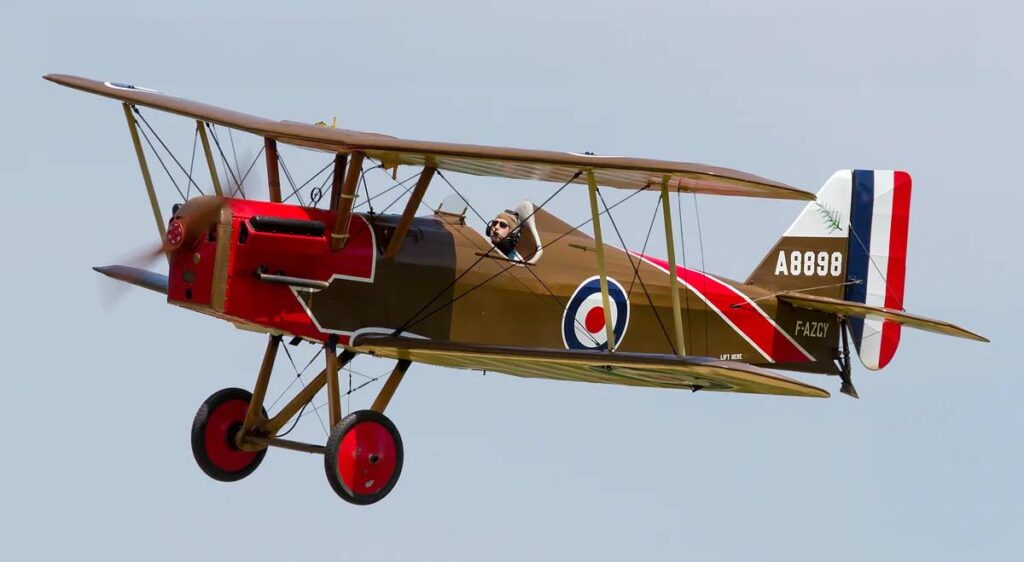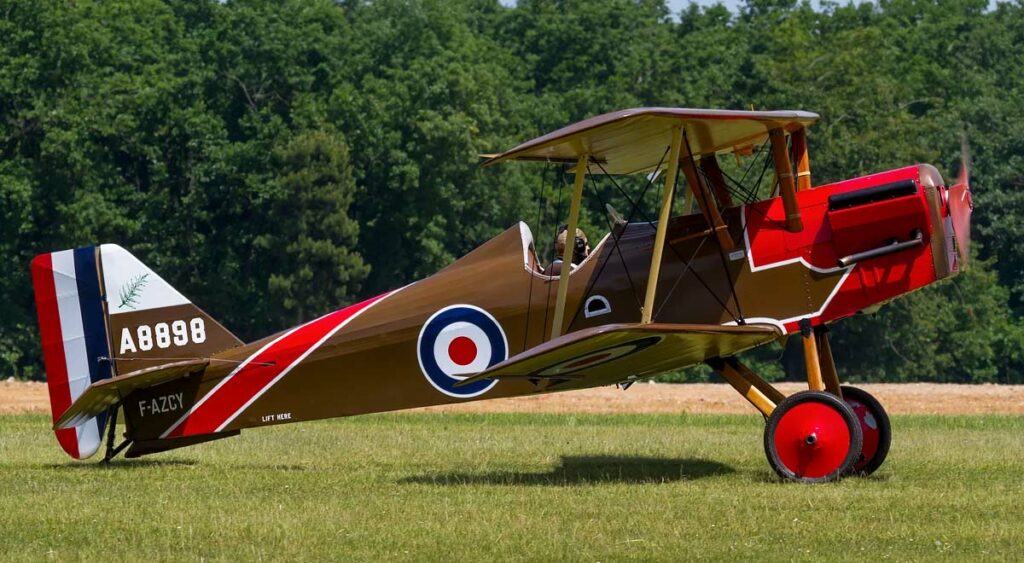RAF S.E.5: Iconic WWI biplane, distinguished for speed & high-altitude capability, integral to the Allies’ air superiority with its robust design. The article provides a comprehensive overview of the Royal Aircraft Factory S.E.5, a significant British fighter aircraft of World War I. It traces the development history, design characteristics, performance metrics, and military service of the S.E.5, highlighting its influential role in achieving air dominance for the Allies and marking a notable advancement in aviation technology of the era.
The Royal Aircraft Factory S.E.5 was a British biplane fighter that served as one of the principal aircraft of the Royal Flying Corps (RFC) during World War I. Renowned for its robust construction and excellent performance, the S.E.5 was instrumental in establishing Allied air superiority in the latter part of the war.

History of the Development of the Royal Aircraft Factory S.E.5
Amidst the intense aerial combats of World War I, the British Royal Flying Corps recognized the need for a high-performance fighter to counter the advanced German aircraft, such as the Albatros and Fokker series. The Royal Aircraft Factory, under the leadership of Henry Folland, John Kenworthy, and Major Frank Goodden, embarked on the development of the S.E.5, with “S.E.” standing for “Scout Experimental.”
The design objective was clear: to produce a fighter that was easy to fly, structurally robust, and superior in altitude and speed to its adversaries. The S.E.5 was also intended to address the shortcomings of earlier aircraft, which often sacrificed pilot safety for maneuverability.
Design of the Royal Aircraft Factory S.E.5
The S.E.5 was a single-seat biplane with a conventional design for its time. It had a wingspan of approximately 8.11 meters (26 feet 7 inches) and a length of 6.38 meters (20 feet 11 inches). The airframe was constructed primarily of wood with a fabric covering, and it featured a boxy fuselage that offered good aerodynamics while housing the powerful Hispano-Suiza 8 engine—a water-cooled V8 engine that was among the best of its time.
The initial production model, the S.E.5, was equipped with a 150 hp engine, which was later upgraded to the 200 hp Hispano-Suiza 8b, powering the S.E.5a variant. The inclusion of a geared reduction to the propeller meant that it could rotate at a slower speed than the engine, allowing for a larger, more efficient blade.
One of the key design advantages of the S.E.5 was its incorporation of a relatively high-powered engine with a sturdy airframe, enabling it to withstand the rigors of combat and providing pilots with a reliable machine that was both forgiving and responsive. It was also one of the first fighters to be equipped with a synchronizing gear, allowing the machine gun to fire through the propeller arc.
However, the design wasn’t without drawbacks. Early models of the S.E.5 were criticized for being underpowered and suffered from various teething problems, including engine reliability issues. Moreover, pilots used to the maneuverability of rotary-engine aircraft found the S.E.5’s handling less nimble.
Performance of the Royal Aircraft Factory S.E.5
In its prime, the S.E.5a could reach a maximum speed of 222 kilometers per hour (138 miles per hour) and ascend to an altitude of 5,180 meters (17,000 feet). Its operational range was about 484 kilometers (300 miles). When the 200 hp Hispano-Suiza 8b engine was installed, it not only improved the aircraft’s speed but also its climb rate, making it one of the fastest aircraft on the Western Front.
Compared to its contemporaries like the German Albatros D.V or even the British Sopwith Camel, the S.E.5a was not the absolute fastest nor the most agile, but it offered an excellent balance of speed, durability, altitude performance, and firepower, which made it a formidable opponent in the sky.

Military Use and Combat of the Royal Aircraft Factory S.E.5
The S.E.5 was armed with a .303-inch Vickers machine gun synchronized to fire through the propeller and, initially, a Lewis gun on a Foster mounting above the wing. This combination of armament provided good firepower and versatility in combat situations.
The aircraft made its combat debut in March 1917 and quickly proved superior to the majority of German fighters, especially at higher altitudes.
It was flown by many of the famous aces of the time, including Albert Ball, James McCudden, and Edward Mannock. The S.E.5a’s reliable performance and strength made it a favorite among pilots.
The S.E.5 did not have an extensive export history but was used by several countries post-war, including the United States, which used it for training purposes. It continued service well into the 1920s but was eventually superseded by newer designs.
The Royal Aircraft Factory S.E.5 was a defining aircraft of World War I. Its introduction into the Royal Flying Corps marked a significant leap forward in combat aircraft design and capability. The S.E.5’s solid build, reliable performance, and effective armament made it one of the most respected fighters of its time, contributing decisively to the air superiority that the Allies enjoyed towards the end of the war. Although it has long since retired from service, its legacy endures as a symbol of early aviation prowess and technological advancement in military aircraft design.
Back to the Warbirds section.